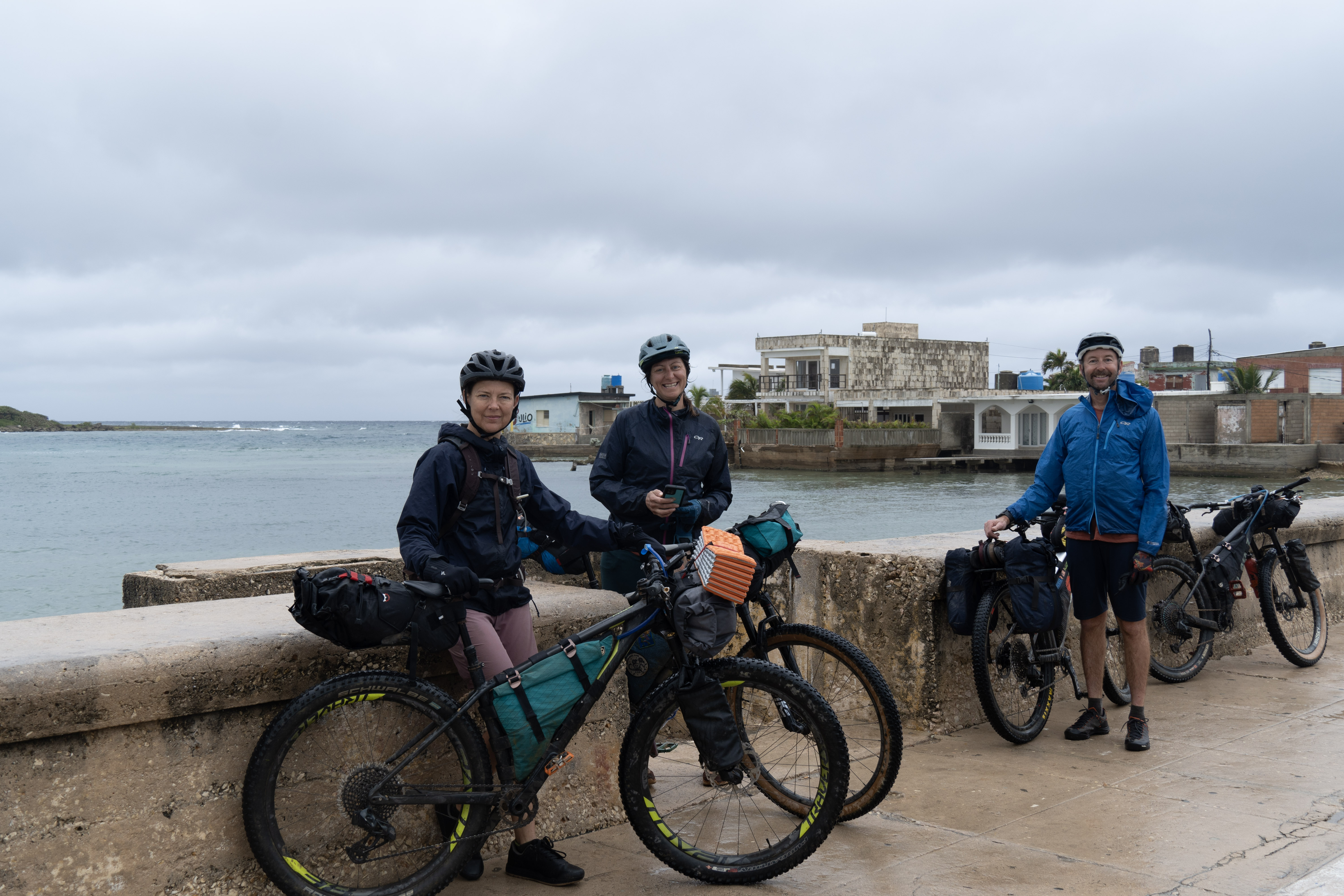I’ve spent a fair amount of time in Latin America. I lived off and on in Santiago Chile for 5 and was married to a Chilean in that life that now seems so far away. I feel confident and capable of traveling to and through the countries south of our border. Cuba was a completely different game. It was by far the most anxious I’ve been about traveling to a foreign country. There are just so many unknowns and it’s difficult to get reliable information.
So let’s start there.
Information
Information about Cuba is almost always tainted. Most of what you can find in English, especially in the US, is produced by or through the lens of Cuban refugees. Their goal is to make the Cuban Government look like it has failed or is about to. For example, most news articles leading up to our trip last December were focused on the “economic crisis” that Cuba was experiencing. In general, this is true, but crisis might be a bit of an exaggeration. People were not starving in the streets and they generally had everything they needed. If you want political or economic news about the island and you live in the US, get yourself a VPN. Connect to the internet through a Latin American country and read their news about the island. It tends to be much more nuanced and accurate in its presentation.
Info about bikepacking or traveling is even less available. There have been a lot of changes in the past few years. For example, the island used to employ a two-currency system. One was used by locals and the other was for foreigners. This is no longer the case, but much of the information that you can find online is a few years old and will tell you that you need to come prepared for this convoluted system.
While I had reached out to a few acquaintances that had traveled to Cuba, I wish had found people who had gone within the last year, to get up-to-date info. In our experience, online posts should be checked for the date. If it was posted over two years ago, I’d look for more recent info to collaborate or refute their claims.
I would also highly recommend studying the history of the island before going.
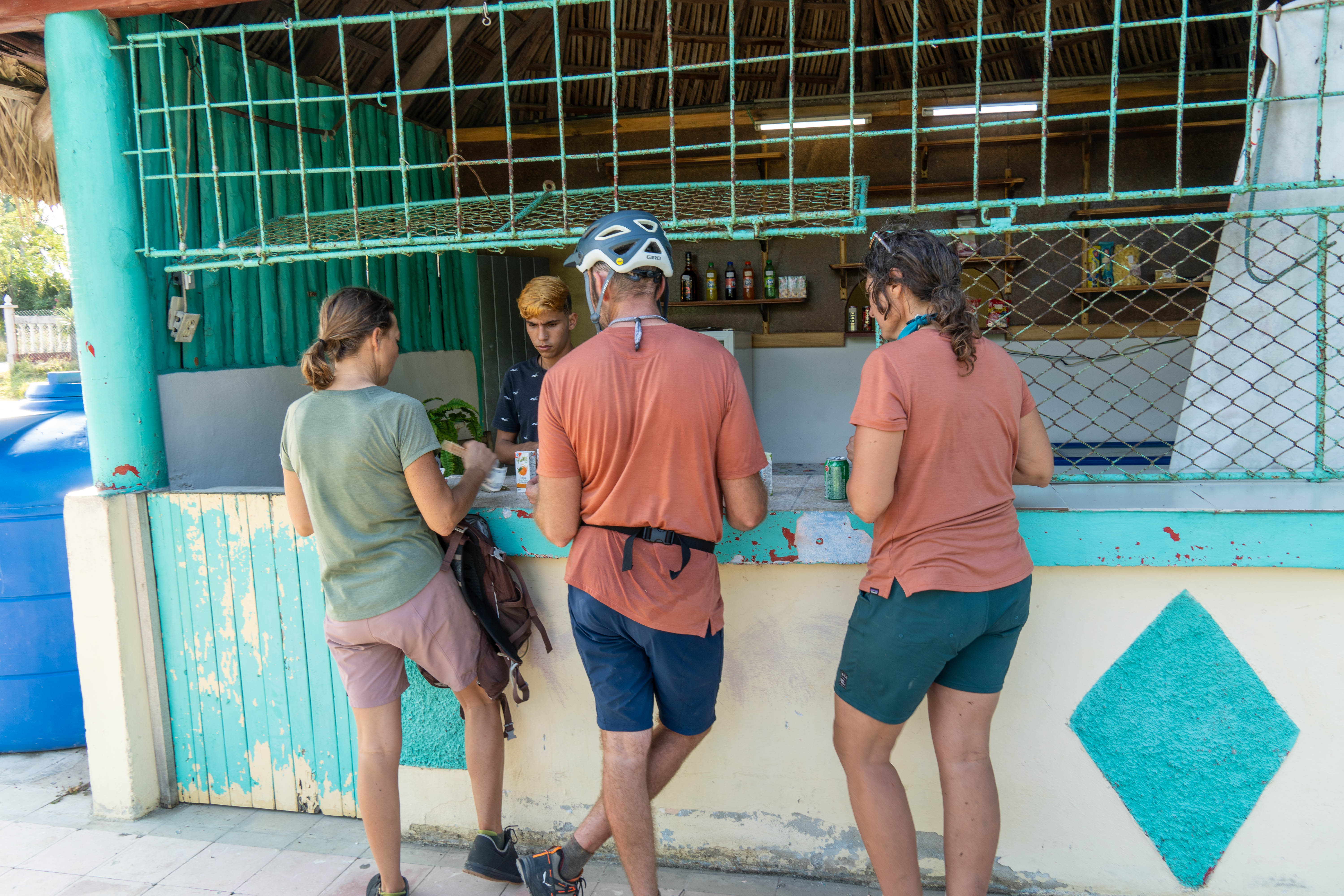
Money
In most places you travel, a credit card with a good limit is a great insurance policy if things don’t go as planned. If you are traveling from the United States to Cuba, your credit/debit cards are useless. Most places don’t even accept cards in general and the US banking system does not connect to Cuba. You have to have CASH and you have to bring enough to cover your entire stay as you won’t have a way to get more.
Yes, this means you will have to budget and stick to your budget. The good news is we found it hard to spend money while there even while eating out almost every meal and only camping two nights. We budgeted $1000 per person for the duration. We spent a little more than half our total budget and that was trying to spend money when we got back to Havana.
We had read online in multiple places that Euros were preferred to US Dollars. I brought about half of my budget in each. In most cases, it didn’t seem to make much of a difference. Having been robbed by a black market money changer in Chile, I was hesitant to trust the advice to avoid changing money at any official or government location. I can tell you this is very sound advice. At the airport, you will find an official government change house. Their rate is less than half of what you will get elsewhere.
We were approached by the taxi boss about changing money. He hustled us pretty hard and we ended up changing about half of what we had. His rate was better than the official one but we could have gotten even better if we had waited and had our host at the Casa Particular change it for us. As much as I try not to be a pest when traveling, it seems to be culturally expected for the host to help you out with whatever you may need and they tend to have connections for those needs. Money exchange, taxis, venues, restaurants, etc. We arrived somewhat late to a Casa Particular and asked about where to eat. She knew we were a ways out of town so she phoned the neighbor who agreed to feed us. We ended up going into town, but that’s the level of help you can expect.
There are places in your touristy areas that will accept USD or Euros. Typically, we found they would have an exchange rate printed on the menu and you just paid with whatever currency you wanted. In general, I would plan to pay with Cuban Pesos, but it’s not a bad idea to have Euros or USD as a backup.
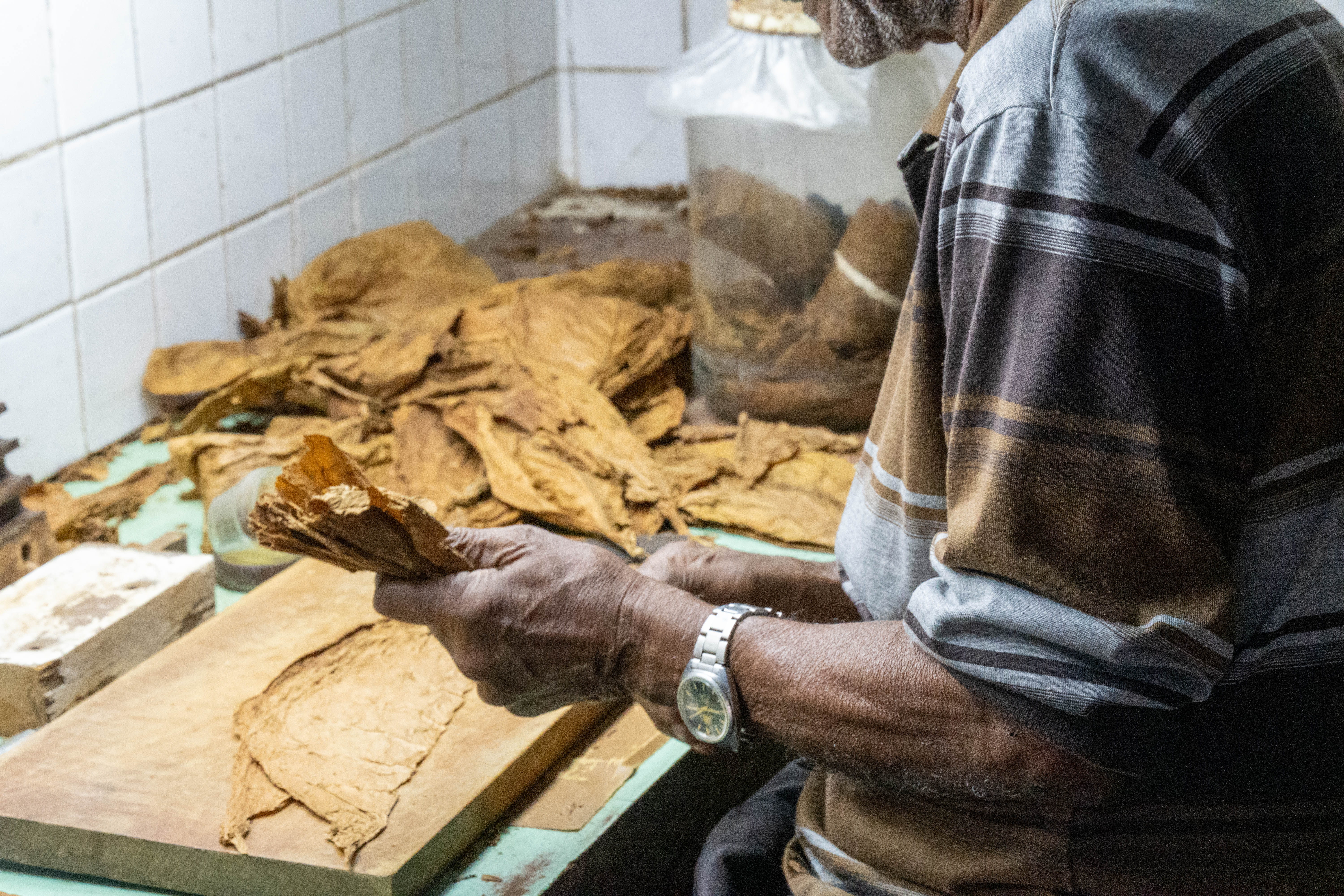
Plan to change your plans
We found that almost nothing was guaranteed on the island. Stores don’t open when their posted hours show they will. Restaurants don’t have everything on the menu and most Casas Particulares can’t be booked ahead of time. We had to go without regularly, but we always were helped graciously when we asked. This is generally just good advice for anyone bikepacking, but expect to have to deal with the unexpected and be willing and ready to adjust accordingly.
Rigid plans will be shattered in Cuba.
Food
If you have any kind of dietary restriction, Cuba will be a very hard place for you. Food is available, but choice is limited. There may only be one restaurant in a small town and their menu may show lots of options, but they will probably only have one or maybe two things that they can serve you. The menu they show you is kind of worthless. Once you are seated, they will either tell you what they have or in a couple of instances, we were given a handwritten menu with our actual choices. It became our habit to just ask what was available.
I don’t know exactly how their distribution system works, but grocery stores kind of don’t exist in the sense that we are accustomed to. You will see government stores that are well stocked, but as a foreigner, you can’t buy things from them. You will be able to purchase snacks and other small items at little stores scattered throughout people’s garages. If you are hoping to purchase food and cook it along the way, you will probably have a hard time buying anything to prepare and a very hard time getting gas. While cars are abundant on the island and you can grab a taxi or take a bus, purchasing gasoline for personal use is difficult. All gas stations that we saw were either closed or had a line of cars lining the road into them. The wait to get gas can be an all-day or multi-day wait. We brought an MSR Whisperlite International that we’ve used on multiple other international trips, but we were never able to purchase gas. I would plan to cold soak or cook over a fire if you feel the need.
We brought a few dehydrated meals and a bunch of snacks with us that we rationed. We ate almost entirely in small restaurants wherever we ended up. This seemed to be the most reliable option.
Typical menu items were pasta, pizza, chicken with rice, rice, and beans. When we were close to the coast, fish was often the only thing on the menu. There are a bunch of fried dough items as well that I never quite figured out what they were and don’t recall the name. The one item that was universally available was ice-cold beer. Beer certainly was not a surprise, but its temperature was. On a couple of hot days, we were served beer slushies which were exactly what we needed.
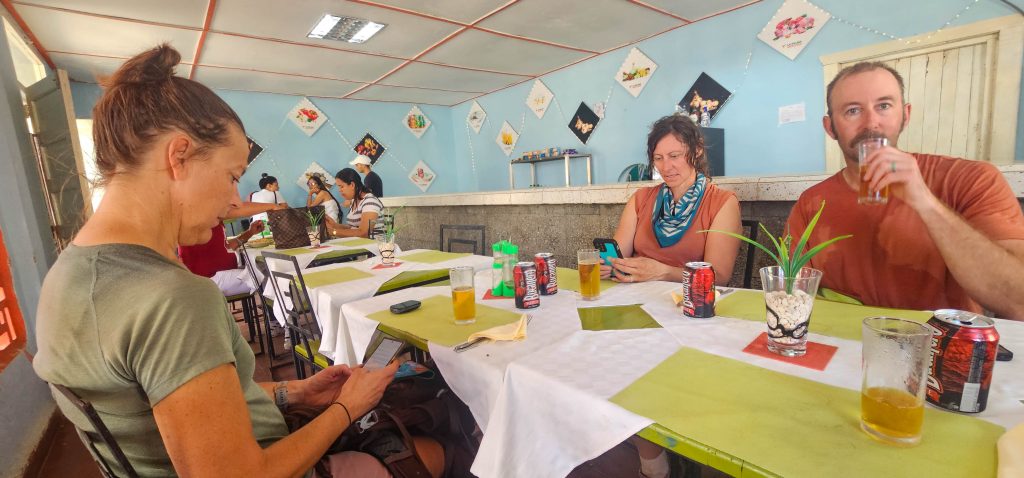
Water
We never really looked into water but brought water filters with us. Talking to one of the hosts, he said they do not drink water from the tap, but oddly enough, there is scant bottled water available, especially outside of Havana. We asked and were given tap water multiple times. We filtered it and were fine. In one of the places we stayed, the tap water was too salty to filter and we had to start our day without any, Luckily for us, it was a cool, rainy day and we were able to get water within an hour or so of starting.
The Kit
This wasn’t our first rodeo or even our second or third. The Alliance gets out pretty damn regularly and I feel like that consistency has helped dial in my kit. I rarely modify it other than adding/subtracting clothing or food.
Camp Kitchen – On international trips, we always use my 25-year-old Whisperlite International. It’s been the stove that I’ve used on all foreign trips. Their durability and repairability are legendary. Mine has not been an exception to that legend. The best thing about this stove is its ability to burn multiple fuel types without any modifications. It’s a bit bulkier and liquid gas is always heavier and more finicky, so I don’t tend to use it too often in the States. A 30-minute tune-up is usually all it needs after a year or so of dormancy to be rocking. As much as I love this stove, It was the one piece of gear I would have left home. As I mentioned above, gas was not readily available to private citizens. Lines at the gas stations were hours or days long depending on the area. This rendered this amazing piece of gear useless. It never left the cages strapped to my fork the entire trip.
Sleep System – Let’s start with shelter. On these types of trips, we opt for a little more space and comfort and brought along our 3 person Big Agnes Tiger Wall. It’s still quite light, packs down nicely, can be turned into a shade shelter and provides us with both bug and weather protection. And when both of those are a necessity, the extra space is worth the tiny bit of weight penalty in our opinion. We only camped two nights, but the tent was clinch for both. Bugs were a thing. One could certainly make it without a tent, but we enjoyed our quick stay on the beach, and the night we got stuck in the middle of nowhere, we were very happy to have it along.
For my pad and bag, I brought along the pad I’ve been using for pretty much what feels like forever, the Thermarest NeoX Air. It’s light, comfy enough, and packs down plenty small. I settled on this pad as it tended to last longer than any of the other air pads I had tried. The forecast was putting our days in the 80s and our lowest temps in the 50s. I opted to bring my Thermarest Vesper 45 Quilt. It was perfect. I was never cold and it provided me with just enough snuggly to sleep well. I used my bag and pad more than my tent. There were a couple of sketchy places we stayed and rolling the pad out on top of the bed gave us a little piece of mind. With that said, you could certainly get by without, you would just want to make sure you ended in a town every night.
Bikes – we all rode hardtails. Mama Bear and I were on our trusty 27.5+ bikes that we have ridden everywhere. A 29er may have been better suited for all the road riding we ended up doing, but the bigger tires are comfy and provided us with a little extra on the parts that were barely even a trail. If you are planning to ride dirt, I would bring a mountain bike. You can do anything on a gravel bike if you put your mind to it, but dirt can and does deteriorate incredibly quickly in Cuba.
Clothing – I stuck to my regular kit adding only rain gear.
- Patagonia Endless Ride bibs
- Ornot Lightweight Mission Shorts
- Patagonia Merino Shirt
- Some random gloves
- Specialized Prevail helmet (lightweight helmets are key to long days)
- Patagonia Micropuffy vest
- Patagonia Merino Air long-sleeve sweater
- Patagonia Dirt Roamer Storm Jacket
- Outdoor Research Diamond Rain Pants
- Giro Flat shoes
- Camp/city clothes – 1 t-shirt, boxers, and Bedrock Sandals
Bags – I use a Revelate Sweet Roll, a Rogue Panda custom roll top frame bag and a Revelate seat bag. These have worked great for me over the years. The Sweet Roll was one of the first bikepacking bags I bought and despite being a bit faded from the sun, it is going strong.
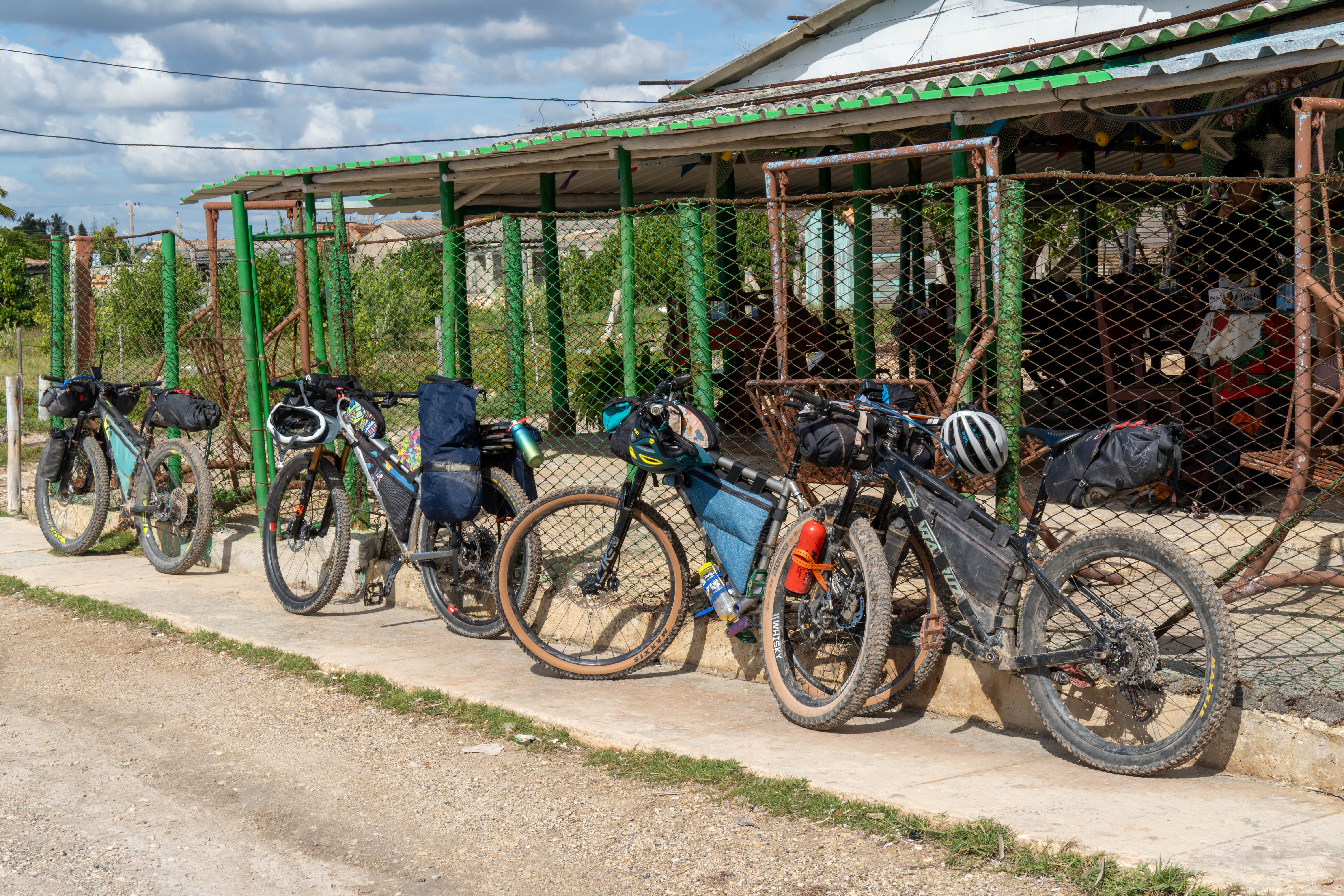
Route
La Ruta Mala from Bikepacking.com was the inspiration and starting point for our route development. We knew we didn’t have time to do a full traverse of the island and preferred the simpler logistics of a loop. About a third to half of our loop was La Ruta Mala and the rest was made up by looking at maps and connecting the dots. John T Digger took it upon himself to draw up several options. We then winged it when we got there following the one that looked best.
A couple of things I would say, anything that is not on pavement is probably going to end up being really rough at some point. Most travel on the island is not by automobile so anything that isn’t paved is most likely built and used by horses or livestock. Even the paved roads can be pretty rough.
Speaking of paved roads, I would not shy away from these. A quick Google image search of roads in Cuba and you will see why. The roads don’t get used very much. We saw cars but outside of bigger cities, they were few and far between. There were sections where half of the road was being used to dry rice. Riding on the highways is allowed and quite pleasant. You can easily loop anything using the paved roads without a problem.
Feel free to drop any questions in the comments or shoot me an email.
Embrace Chaos. Seek Discomfort.


